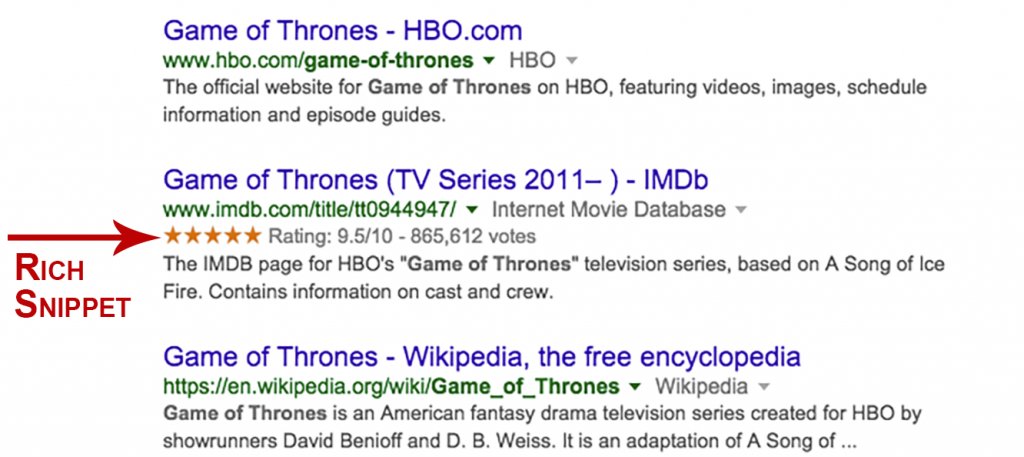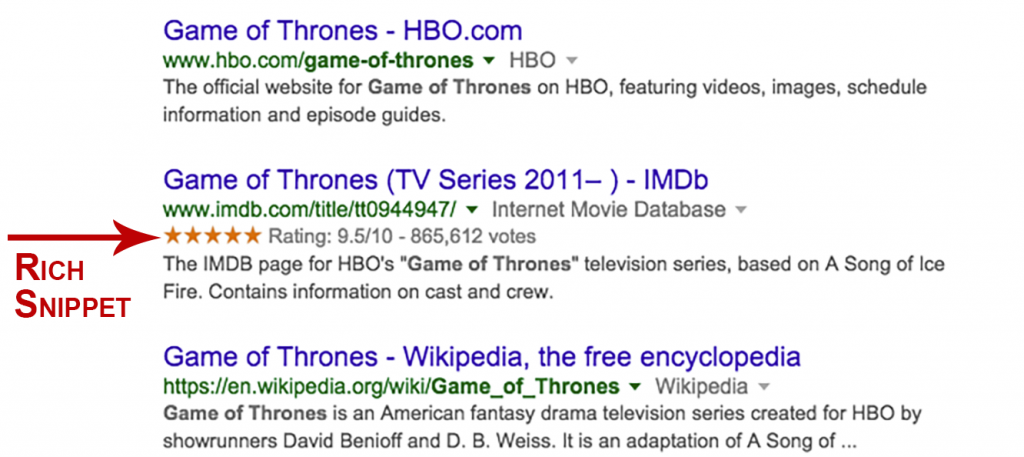
How to Differentiate Your eCommerce Site with Rich Snippets
By Josh George, Technical Lead
Ranking within the top results of search engines like Google and Bing is a critical component to driving sales for many companies. In the aggressive and cutthroat world of Search Engine Optimization (SEO), businesses try to do whatever they can to get the click.
So what if I told you there is a way to take up more real estate on the Search Engine Result Pages (SERPs), thus giving your business more exposure to searchers over your competitors, all for free? Well, there is, and many businesses (including your biggest competition) are taking advantage of it to drive clicks away from your storefront.
I’m talking about rich snippets, and this article will discuss everything you need to know to leverage them on your own eCommerce site.
What are Rich Snippets?
It’s important to first understand what is meant by rich snippets. In short, rich snippets (also known as structured data) are pieces of code that you add to various elements on your storefront. This code provides search engines with extra information they can share with those who use the search.
Think of rich snippets as the cherry on top of a chocolate sundae: it allows search engines to give your listing that extra flare that differentiates your product/service from everyone else, and makes your site that much more appealing to those who are searching. See the below screenshot of a search for “Game of Thrones” in Google:

See how the IMDB listing in this screenshot just naturally stands out from the other results? That is a rich snippet in action.
If you think about it, implementing rich snippets is a win-win situation; search engines win because they give their audience more relevant data about your product/service, thus allowing the searchers to make more informed decisions, and you win because your listing gets to take up more space in the SERPs.
Where Can Rich Snippets Be Used?
In terms of eCommerce, both Google and Bing support a variety of rich snippets that may be relevant to your storefront. This includes (but not limited to) the following:
- Products: Fundamental product information such as price, availability, rating/review counts, and, as of this writing, even product photos in some instances can be parts of rich snippets. Snippets can even track sale prices if you utilize the “priceValidUntil” property, which can help trigger a sense of urgency in buyers.
- Reviews: This consists of the aggregate ratings for a product. As you can see in the screenshot above, this is related to where a search engine shows stars, rating and number of votes.
- Breadcrumbs: While breadcrumb trails are picked up by Google automatically, Bing requires snippets to identify title and child properties.
- Events: Snippets can be used for organized events by displaying event times and locations, driving people to such events as sales or store openings.
- People: This includes company and position information for eCommerce sites that have personal biography information on them
- Locations: You can utilize snippets such as addresses, phone numbers, URLs, and geolocation coordinates to drive people to your brick-and-mortar stores. As a supplemental benefit, using these location-based tags will help complement local search results as well.
How to add Rich Snippets To Your eCommerce Site
Depending on what you want to display on the SERPs, there are a variety of code snippets that can be applied to your storefront. Fortunately, they all follow a specific standard, and are things your development team should be able to quickly learn.
From a top-level perspective, adding rich snippets simply means adding supplemental HTML tags to your code.
Luckily, both Google and Bing have published clear and detailed documentation on how to implement rich snippets on your own storefront.
Rich Snippet Assistance
To help ensure your development team sets up rich snippets properly, Google has actually released a free tool, which enables your team to determine exactly what information to include and where to place rich snippets on your storefront. Your team can use the tool to evaluate your current eCommerce site, identify the various properties where rich snippets should be applied, and quickly discover where they should be applied in the code—all in a very user-friendly manner.
Once your development team creates and publishes the rich snippets on your storefront, you can then test them to make sure they are working properly. Again, Google provides a free tool where you can test your rich snippets. Using this tool makes it possible to validate all your rich snippets even before publishing them on your live site.
Final Thoughts
It is important to understand that, just like when implementing SEO, rich snippets may not appear within your listings on SERPs immediately. As with SEO, it takes time for the search engine spiders to crawl, collect, and publish your data on their SERPs.
So there you have it: with less than an hour of development time, your eCommerce site can leverage rich snippets properly and effectively. As a result of implementing rich snippets, your listings will not only occupy more real estate on the SERPs, but will also provide searchers with more insightful information about you compared to your competitors. This will help establish your brand as an authority in the searcher’s mind, and help generate more clicks, which will ultimately translate into additional sales for your online store.
Have any questions? Contact us.
Josh George is a Technical Lead Engineer on the LYONSCG Implementation team and has been developing Demandware storefronts since 2012. Josh is both a certified Demandware Developer and Architect, and also has a passion for learning about digital marketing.
